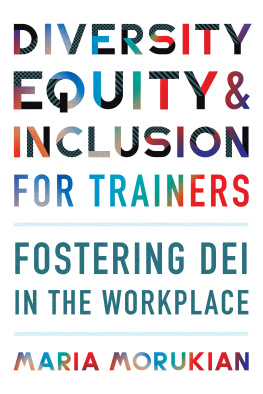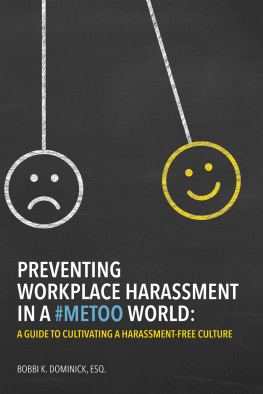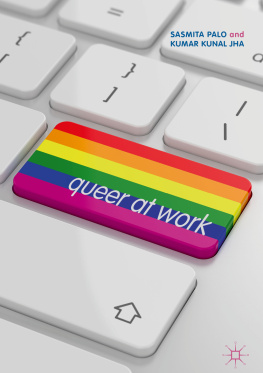To Laura Graves for her love and support and to the memory of my grandmother Edna Powell for all the quarters and much more
GARY N. POWELL







ix
Belle Rose Ragins
xii
Laura M. Graves & Gary N. Powell
Laura M. Graves & Gary N. Powell
"We ask justice, we ask equality, we ask that all the civil and political rights that belong to citizens of the United States, be guaranteed to us and our daughters forever."
-Susan B. Anthony (1820-1906)
"Our struggle today is not to have a female Einstein get appointed as an assistant professor. It is for a woman schlemiel to get as quickly promoted as a male schlemiel."
-Bella Abzug (1920-1998)
"The truth will set you free. But first, it will piss you off."
-Gloria Steinem (1934)
 hen the first edition of Women & Men in Management was published in 1988, the field was just emerging as an established area of scientific inquiry. Groundswells of new studies were being published, and excitement was in the air. We felt like we were discovering vast new frontiers of knowledge-the Wild West of Research. But our excitement was quickly tempered when we looked at the data. The picture was bleak: gender discrimination was rampant, the glass ceiling was glacier-thick, and women earned 70% of the pay of their male counterparts 2 But we were optimistic. Surely things would change once the inequities were uncovered? We remained confident that gender equity was just around the corner and that by the turn of the century women would receive equal status in the workplace.
hen the first edition of Women & Men in Management was published in 1988, the field was just emerging as an established area of scientific inquiry. Groundswells of new studies were being published, and excitement was in the air. We felt like we were discovering vast new frontiers of knowledge-the Wild West of Research. But our excitement was quickly tempered when we looked at the data. The picture was bleak: gender discrimination was rampant, the glass ceiling was glacier-thick, and women earned 70% of the pay of their male counterparts 2 But we were optimistic. Surely things would change once the inequities were uncovered? We remained confident that gender equity was just around the corner and that by the turn of the century women would receive equal status in the workplace.
Time passed, and over 20 years later, we have made precious little progress toward that goal. In the United States, women are more likely than men to pursue undergraduate and most graduate degrees, but earn only 80% of the pay of their male counterparts.3 It appears that the glass ceiling is made of kryptonite; only 13.5% of women have made it to the Fortune 500 executive suite, and women are actually losing ground in some states.4 Even as women are poised to become the majority of the workforce, they increasingly encounter workplaces replete with harassment and discrimination, experiences that are amplified for women who face a double or triple "whammy" based on their race, ethnicity, disability, weight, religion, socioeconomic class, or sexual orientations
But the critical challenge before us is not our lack of progress, it is the myth of equity: the unfounded belief that stereotyping and discrimination are things of the past. Whether it is based on wishful thinking, myopia, or just plain propaganda, the myth of equity is perhaps most damaging when held by the younger generation of women. These young women can be seen thanking the early "trailblazers" for forging the path to workplace equity, as if somehow the trailblazers banished sexism with a swift wave of their laser sword or magic wand. The trailblazers shake their heads; they recognize that gender equity remains more of a wish than a reality, that misogyny is alive and well within and outside the workplace, and that the bright young women marching into the workforce will be greeted with virulent new strains of modern sexism that are more pernicious and damaging than ever. These resistant new strains are entrenched deep in our psyche and, like the strains of old, distort our perceptions and frame our expectations. The classic 1950s film clip of the female secretary being chased around the desk by her lecherous male boss has been replaced with a new DVD featuring either Sigourney Weaver perched on her throne of a desk, ready to be toppled, or Sandra Bullock, realizing-thank God not too late-that work can never take the place of a real man. These young women are now told that they can have it all-and they believe it. And if they don't get it all-well, they have only themselves to blame. We rarely witness their male counterparts grappling with these issues. The myth of equity persists and permeates our expectations of ourselves and of others.
So it is now, more than ever before, that we need this new edition of Women and Men in Management. This gem of a book shines the brightest in these dark times. Gary Powell has once again produced a volume that documents the current state of research on gender in the workplace. The author does a spectacular job of synthesizing an array of over 700 studies and articles that document not only the current state of gender in the workforce, but also the full range of developmental, social, and societal variables that have led to this current state of affairs. This book not only challenges the myth of equity-it roundly refutes it-and not a moment too soon.




















 hen the first edition of Women & Men in Management was published in 1988, the field was just emerging as an established area of scientific inquiry. Groundswells of new studies were being published, and excitement was in the air. We felt like we were discovering vast new frontiers of knowledge-the Wild West of Research. But our excitement was quickly tempered when we looked at the data. The picture was bleak: gender discrimination was rampant, the glass ceiling was glacier-thick, and women earned 70% of the pay of their male counterparts 2 But we were optimistic. Surely things would change once the inequities were uncovered? We remained confident that gender equity was just around the corner and that by the turn of the century women would receive equal status in the workplace.
hen the first edition of Women & Men in Management was published in 1988, the field was just emerging as an established area of scientific inquiry. Groundswells of new studies were being published, and excitement was in the air. We felt like we were discovering vast new frontiers of knowledge-the Wild West of Research. But our excitement was quickly tempered when we looked at the data. The picture was bleak: gender discrimination was rampant, the glass ceiling was glacier-thick, and women earned 70% of the pay of their male counterparts 2 But we were optimistic. Surely things would change once the inequities were uncovered? We remained confident that gender equity was just around the corner and that by the turn of the century women would receive equal status in the workplace.